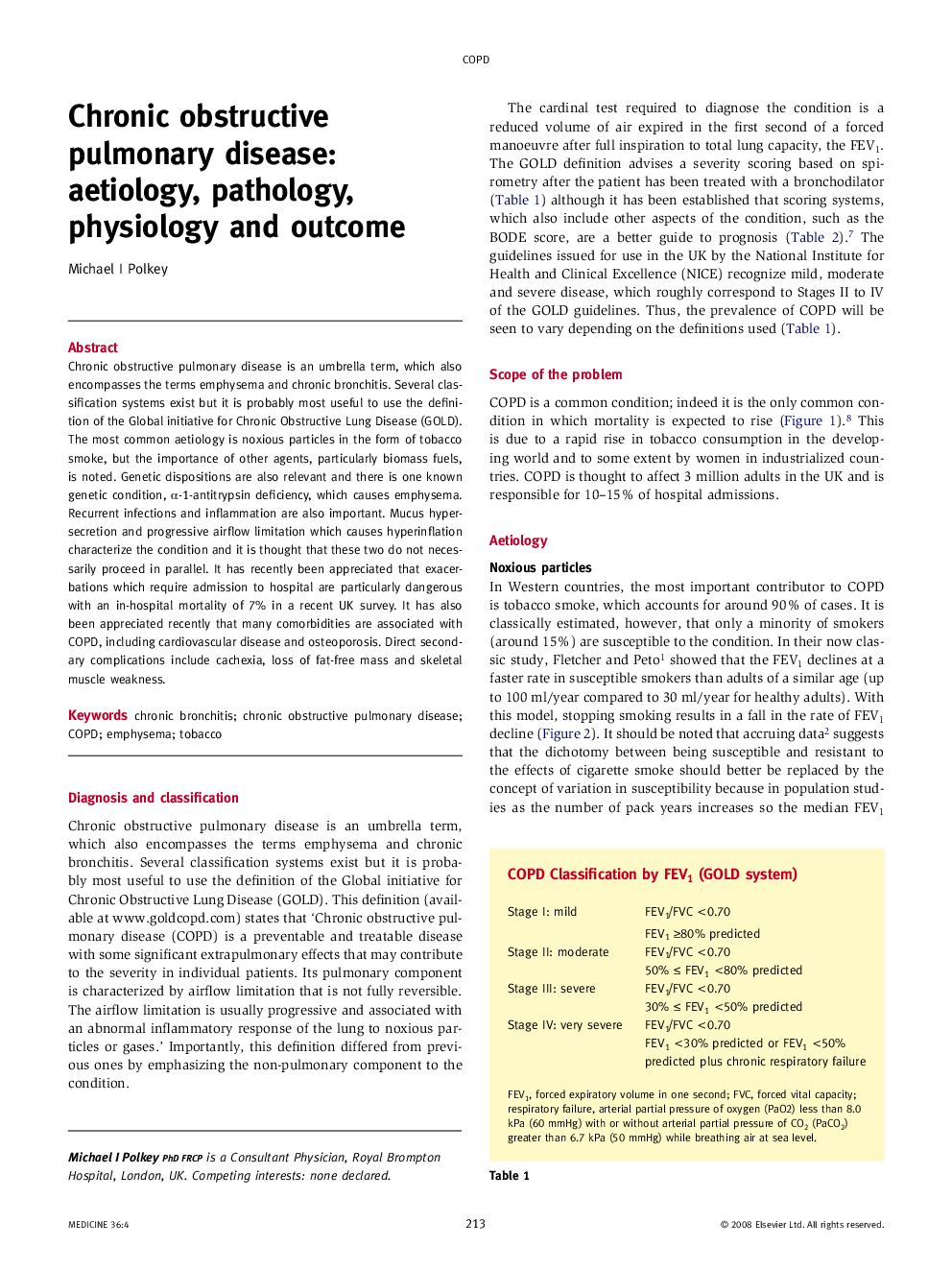| Article ID | Journal | Published Year | Pages | File Type |
|---|---|---|---|---|
| 3805640 | Medicine | 2008 | 5 Pages |
Chronic obstructive pulmonary disease is an umbrella term, which also encompasses the terms emphysema and chronic bronchitis. Several classification systems exist but it is probably most useful to use the definition of the Global initiative for Chronic Obstructive Lung Disease (GOLD). The most common aetiology is noxious particles in the form of tobacco smoke, but the importance of other agents, particularly biomass fuels, is noted. Genetic dispositions are also relevant and there is one known genetic condition, α-1-antitrypsin deficiency, which causes emphysema. Recurrent infections and inflammation are also important. Mucus hyper-secretion and progressive airflow limitation which causes hyperinflation characterize the condition and it is thought that these two do not necessarily proceed in parallel. It has recently been appreciated that exacerbations which require admission to hospital are particularly dangerous with an in-hospital mortality of 7% in a recent UK survey. It has also been appreciated recently that many comorbidities are associated with COPD, including cardiovascular disease and osteoporosis. Direct secondary complications include cachexia, loss of fat-free mass and skeletal muscle weakness.
